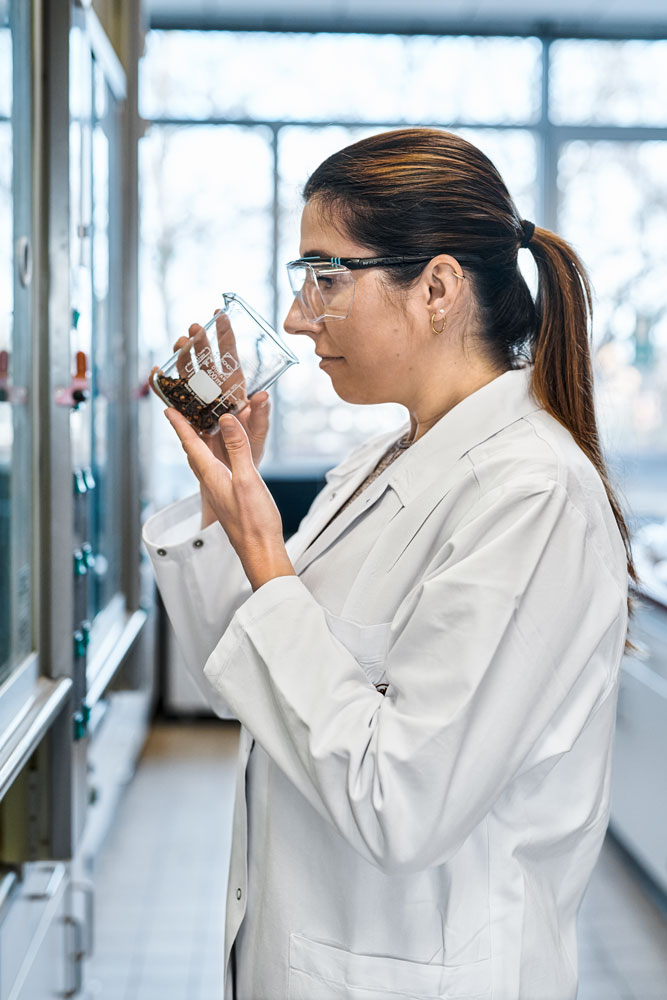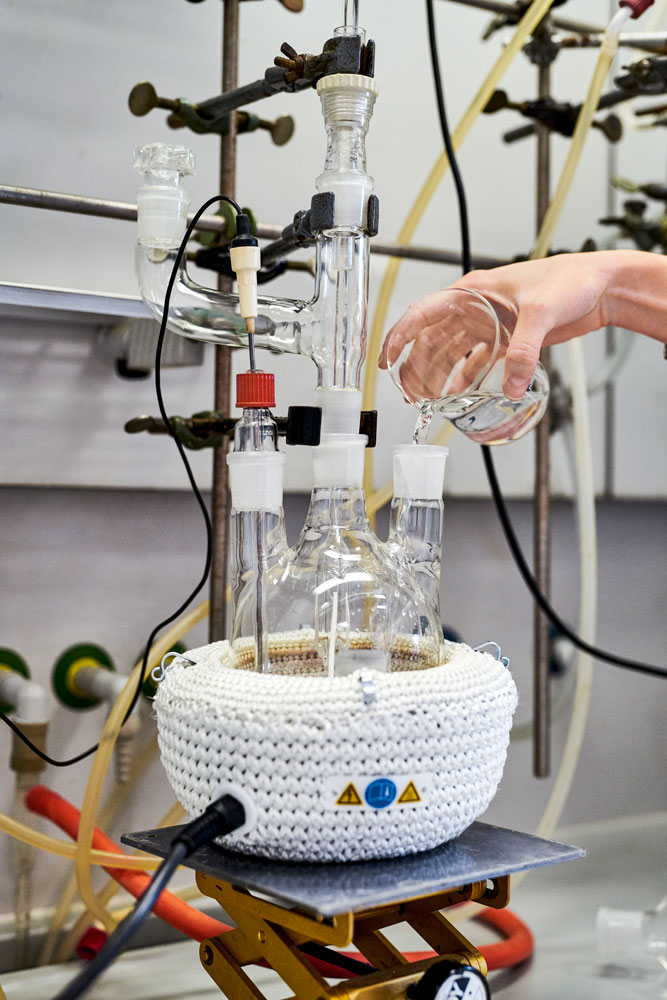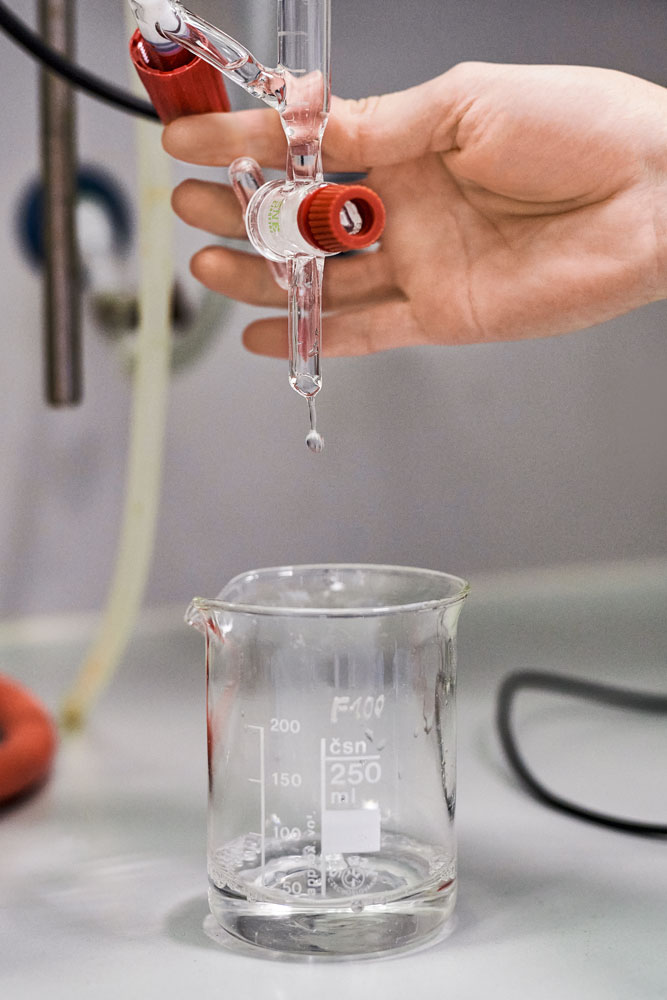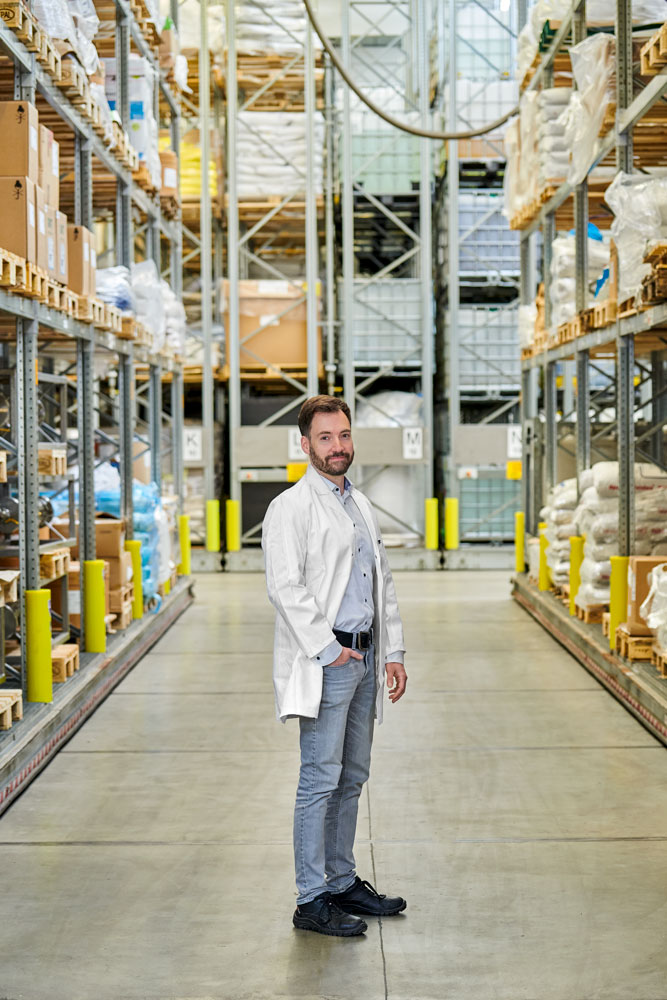Jennifer Bufalo opens a bag of cloves. The biologist with a PhD in her field breathes it in and tries to recognize the full scent profile. Then the lab head, who is primarily concerned with natural substances for the Scent & Care unit, wonders what ingredient from the clove could lend a new olfactory element to a traditional perfume ingredient. Symrise has been using the essential clove oil for decades as a product, for example, in the area of dental care or in perfumes. Most essential oils are created through steam distillation. This process involves entraining the fragrance molecules in the vapor and then condensing it into liquid form. The essential oils are collected, and a lot of water is produced as a byproduct. There are more valuable ingredients in there: small amounts of intense and very volatile molecules that still smell strongly of cloves even after the essential oil has been separated.
Bufalo has been working for Symrise in Brazil since 2015 and has been heading the lab in Holzminden for a few months now. In her hometown, she made a discovery while visiting a supplier. “I found a few containers there and, after asking what was in them, was told that it was the leftover water from the clove distillation that gets thrown away.” She gets curious, smells the liquid and instantly recognizes that she has discovered something special. She takes a sample and shows it to two Symrise perfumers, Fanny Grau and Isaac Sinclair, who confirm the peculiarity of her find: They had never smelled a clove scent like this.
Bufalo recognizes the potential of the original byproduct and prepares it in the lab. For this, she uses the SymTrap® process and what is known as the aqueous phase. Symrise developed and patented it 20 years ago. The liquid first passes through the adsorber column while specific temperatures or pressure levels are maintained – Bufalo won’t reveal the exact conditions. After the process, the fragrance molecules remain suspended in the equipment and are then dissolved out again by means of a food-grade and natural extraction agent. The liquid byproduct from the distillation process produces a new product that differs from essential clove oil in odor and is therefore ideally suited as an exclusive additional material in fragrance blends.




